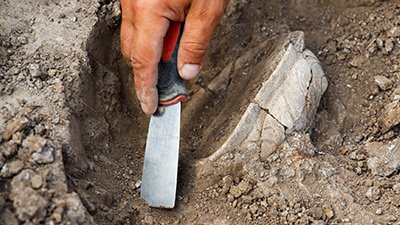
Archaeological Research Confirms a Biblical Account in 2 Kings
“At that time Hazael king of Syria went up and fought against Gath and took it” (2 Kings 12:17). This short summary of what must have been a fearsome battle against the stronghold of Gath introduces the threat King Hazael posed to Jerusalem, a threat that King Jehoash of Judah avoided by paying Hazael with “sacred gifts.” But, yes, even this minor, one sentence mention of a battle is true historical narrative—it really happened—and it appears it has been confirmed by archaeology!
Israeli scholars used a novel approach to make “a discovery that enables archaeologists to identify burnt materials found in excavations and estimate their firing temperatures.” This new approach is designed to give researchers a glimpse into ancient mud brick construction methods, but in the process, they affirmed the historicity of the biblical account.
According to this press release, certain scholars in a recent paper doubted that Gath, a stronghold at the time of King Hazael, had been attacked and overtaken—arguing instead that the excavated brick in Gath had been pre-fired before construction and just tumbled down over decades (however, most researchers believe the typical brick-making method for this region prior to the Roman occupation was sun-drying, not kiln-firing, so that would have been an anomaly).
But by applying this novel research method of thermal demagnetization to these bricks, the authors of this new study concluded that, no, the city had indeed been burned down, as the bricks showed evidence of firing temperatures compatible with conflagration rather than a kiln. This new determination is consistent with the Bible’s account of Hazael overtaking Gath.
When it comes to archaeology, researchers should always start with the Bible’s eyewitness account of history.
When it comes to archaeology, researchers should always start with the Bible’s eyewitness account of history. Scripture was ultimately written by the God who was there, who knows all things, and who never makes a mistake. We should trust his Word over the fallible thoughts of people who weren’t there, don’t know everything, and frequently make mistakes.
Many times, scholars have claimed a person or place mentioned in the Bible didn’t exist. But over time, archaeology has confirmed the Bible’s historical account over and over again.
Oh, and speaking of archaeology, I’m excited that we have a new education specialist at the Creation Museum—Corey East, who completed her MA in Archaeology and the Ancient Near East from the Hebrew University of Jerusalem. She will be presenting a new Discover program (our free daily program series at the Creation Museum) called “Does Archaeology Confirm the Bible?” and a hands-on Explore Biblical Archaeology half-day program for 11–18-year-olds. Be sure to check out those programs to learn more.
Get More Answers on Answers News
This item was discussed yesterday on Answers News with cohosts Dr. Georgia Purdom, Patricia Engler, and Rob Webb. Answers News is our weekly news program filmed live before a studio audience here at the Creation Museum, broadcast on our Answers in Genesis YouTube channel, and posted to Answers TV. We also covered the following topics:
- Biden’s top election priority? Abortion.
- Baby wrens learn songs before they hatch.
- JWST reveals more space secrets.
- And more!
Watch the entire episode of Answers News for January 17, 2024.
Be sure to join us each Wednesday at 2 p.m. (ET) on YouTube or later that day on Answers TV for Answers News. You won’t want to miss this unique news program that gives science and culture news from a distinctly biblical and Christian perspective.
Thanks for stopping by and thanks for praying,
Ken
This item was written with the assistance of AiG’s research team.
Most Recent News
-
March 31, 2025 from Ken Ham Blog
Archaeology confirms the Bible (and has done so over and over again through the years)—including with a new set of excavations under the Church of the Holy Sepulchre in Jerusalem.
-
March 29, 2025 from Ken Ham Blog
An exciting discovery was recently made in Queensland, Australia, at Biloela State High School—a set of 66 footprints made by 47 individual dinosaurs.

Answers in Genesis is an apologetics ministry, dedicated to helping Christians defend their faith and proclaim the good news of Jesus Christ.
- Customer Service 800.778.3390
- © 2025 Answers in Genesis



